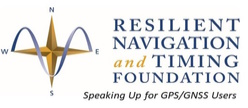
Image: Curran, Inside GNSS
Blog Editor’s Note: This item was published by “Inside GNSS and is repeated here for the benefit of our members and followers. Its published title is “Systematic Jamming.”
Here is a quote from this fairly long academic paper:
“Simple jamming, as we know it today, is a very easy attack to launch, but it is also very easily detected, readily localized, and often relatively easily mitigated. Spoofing, although very possible, and not necessarily difficult, is considerably more difficult than jamming. In the short term, if denial of service through simple jamming becomes non-viable, it is not unreasonable to expect this threat to evolve. There appears to be a middle-ground between jamming and spoofing, that might thwart current detection, localization and mitigation techniques. It appears to be very accessible to a malicious attacker, as it only requires commercial, off-the-shelf components, and some basic integration; yet it can pose a significant threat to a naïve receiver implementation. This increased threat comes at a very small increased attack cost and complexity, and has the potential to disrupt many location-based services, by imposing an undetectable partial (data recovery) or full (position and timing) denial-of-service. Preliminary results suggest that this attack methodology is feasible and, under certain conditions, may be quite effective when targeting a naïve receiver.”

